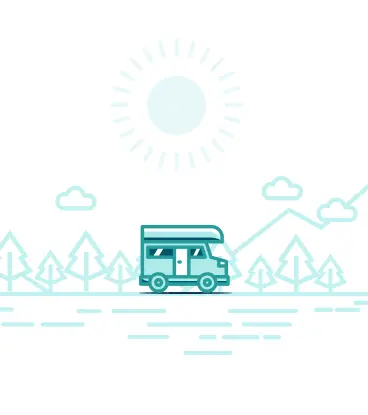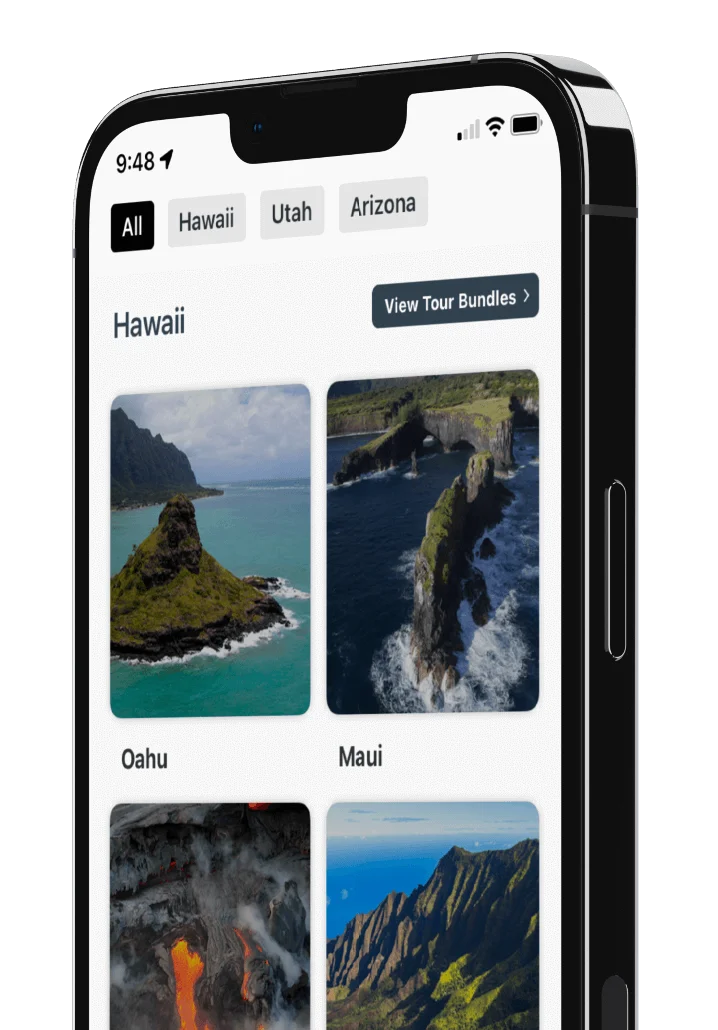
Top 5 Things To Do In Olympic National Park

About Olympic National Park
Olympic National Park consistently ranks as one of the top ten national parks in America.
Located in the remote northwest corner of Washington State, this wilderness gem has it all – alpine mountains, lush temperate rainforests, and stunning coastal beaches.
Ranging in elevation from sea level to nearly 8,000 feet, it’s one of the few national parks where you can walk along a beach and through a subalpine meadow on the same day!
Amazing Things to Do in Olympic National Park
Olympic National Park is an outdoor lover's paradise. It’s Washington State’s largest national park with almost a million acres to explore!
Here are just a few activities and adventures to help you experience the wonders of the Olympics:
1. Take a Scenic Drive
 Hoh Rainforest/ Shutterstock Image
Hoh Rainforest/ Shutterstock Image
Some of the most dramatic views and best hikes require a side trip off Highway 101 on one of these roads:
a. Hurricane Ridge Road
This scenic drive winds up the mountain to one of the park’s most popular destinations – Hurricane Ridge.
Located at almost a mile above sea level, this stunning viewpoint showcases the alpine splendor of the Olympic Mountains. Plan for about an hour drive round trip.
NOTE: This road requires an entrance fee or park pass. To avoid the crowds and find parking, it’s best to arrive before 10 a.m.
b. Olympic Hot Springs Road
Take this short drive along the beautiful Elwha River to Madison Falls. This delightful little waterfall is an easy walk from the trailhead.
NOTE: The road is closed to vehicles past the trailhead. No entrance fee is required.
c. Highway 101 at Lake Crescent
The stretch of highway along the south shore of Lake Crescent offers multiple pullouts and picnic spots with stunning lakeside views.
d. Sol Duc Hot Springs Road
This road follows the pristine Sol Duc River up into the beautiful Sol Duc Valley. Along the way, you can:
- stop at the Salmon Cascades to see the fish jump in the fall
- meander through a mossy old-growth forest on the Ancient Groves Trail
- stop for a soak in the mineral springs at the Sol Duc Hot Springs Resort, or
- hike to the stunning Sol Duc Falls
Plan for about an hour's drive roundtrip.
NOTE: This road requires an entrance fee or park pass.
PRO TIP: The hot springs are open to the public, but reservations are first come, first served. If you’d like to soak in the springs, we recommend you stop at the resort to make a reservation before the hike, then come back and enjoy a soak afterward. And don’t forget to pack your swimsuit and towel!
e. Upper Hoh Road
The Hoh Rainforest is one of four temperate rainforests in Olympic National Park. The Upper Hoh Road leads right to the Visitor Center in the heart of this enchanting forest.
Along the way, you’ll notice more and more trees draped with emerald green moss and forest floors carpeted with ferns.
Maybe you’ll luck out and see a herd of Roosevelt elk grazing in a nearby field! The drive to the visitor center and back takes about an hour round trip.
03/11/2025 - The Hoh Rainforest in Olympic National Park is closed due to road damage.
NOTE: This road requires an entrance fee or park pass. To avoid the crowds and find parking, it’s best to arrive before 10 a.m. or after 6 p.m.
PRO TIP: On the way back, stop at the Peak 6 Adventure Store for a great selection of souvenirs and backcountry gear–or grab some coffee and a bite to eat at the Hard Rain Cafe.
f. Highway 101 at Kalaloch
The stretch of Highway 101 between South Beach and Ruby Beach at Kalaloch offers spectacular views of the Pacific Ocean.
Pull over at one of the roadside overlooks for a photo, or walk down to one of the beaches for a close-up.
The sea stacks and tidepools at Ruby Beach and Beach 4 are incredible! You’ll also want to stop for a selfie at the famous Kalaloch Tree of Life.
PRO TIP! Along this section of highway, you can take a short detour to visit the Big Cedar Tree–a massive one thousand-year-old Western Red Cedar. Even though a storm splits its trunk, the gnarly giant still inspires awe.
2. Take a Hike
 Shutterstock Image
Shutterstock Image
The best way to experience the natural wonders of Olympic National Park is to get out of your car and take a hike! The park includes over 600 miles of trail.
You can walk through an old-growth forest, along the shore of a crystal blue lake, through an alpine meadow, beneath trees draped with moss, or along a spectacular coastline studded with rugged sea stacks.
There are trails for every kind of ability and interest–from easy, accessible paths to challenging wilderness trails. So lace up your hiking boots, grab a raincoat, and get ready for an unforgettable adventure!
a. To See a classic Olympic Old-Growth Forest,
Check out the Heart O’ the Forest Trail at the base of Hurricane Ridge or the Ancient Groves Trail in the Sol Duc Valley.
b. Take a Lakeside Stroll
Check out the Spruce Railroad Trail on the north shore of Lake Crescent or the Moments in Time Trail on the south shore. There is also a lovely one-mile path along the south shore of Lake Quinault that is part of the longer Quinault Loop or Rainforest Nature Trail.
c. For a High-Elevation Hike
Try the popular Hurricane Hill Trail or Big Meadow Loop at Hurricane Ridge. Walk through spectacular sub-alpine meadows with breathtaking panoramic views of the Olympic Mountains and the Strait of Juan de Fuca.
During the summer, the wildflowers blanket the slopes with color. You might get lucky and spot an Olympic Marmot–one of Washington’s endemic animals found only in the Olympic Mountains.
d. Walk Through a Temperate Rainforest
You might want to pack your raincoat and waterproof hiking shoes! The popular Hall of Mosses and Spruce Nature Trail in the Hoh Rainforest can see up to 12 feet of rain a year!
The abundant rainfall is what creates the rich shades of green found in this enchanting forest. You’ll find plenty of moss hanging from tree branches and giant ferns carpeting the ground.
You might even spy on the iconic banana slug sliding across the forest floor!
PRO TIP! If you want to escape the crowds, we recommend the hikes in the lesser-known but just as beautiful Quinault Rainforest.
On the lake’s north shore, you can take a trip back in time on the Kestner Homestead Trail or experience the peaceful serenity of moss-draped big-leaf maples on the Maple Glade Rainforest Trail.
Several Olympic National Forest trails around Lake Quinault Lodge offer additional opportunities to walk through the lush Quinault rainforest or along the lake.
e. For a Spectacular Coastal Hike
Head to La Push and Rialto Beaches near Forks. The trails to the stunning Second Beach and Third Beach at La Push pass through lush coastal forests which are just as beautiful as the beaches themselves.
Rialto Beach boasts one of the park’s most popular coastal hikes–the hike to Hole in the Wall.
Listen to the crashing surf as you trek along the pebbly shore to this iconic rock formation–appropriately named for the giant hole in the middle.
f. Chase Waterfalls
Check out the fan-favorite hikes to Marymere Falls near Lake Crescent and Sol Duc Falls at the end of the Sol Duc Hot Springs Road.
Both trails feature beautiful old-growth forests, picturesque wooden bridges, and spectacular waterfalls at the end. Bring along your camera!
g. Trek Into The Heart of the Olympic Wilderness
Do your research, get the right permits, and come prepared. There are numerous trails for experienced hikers that lead into the heart of the Olympic Mountains and along its remote wilderness coastline.
Some of the more popular ones are the almost 9-mile round trip to Shi Shi Beach, the 4-mile round trip climb up Mount Storm King, and the 27-mile round trip trek to Enchanted Valley. Check the park website or talk with a ranger for more information.
3. Stop at a Visitor Center
 Image from Flickr by Virginia Hill
Image from Flickr by Virginia Hill
These are great places to pick up park maps, talk with rangers, check out exhibits, check the tide chart, buy souvenirs, and take advantage of flush toilets. Olympic National Park has three main visitor centers.
a. The Olympic National Park Visitor Center
This stop in Port Angeles is the park’s main information center. It’s open daily year-round except Thanksgiving and Christmas. Hours vary according to the season.
b. The Hurricane Ridge Visitor Center
The original Hurricane Ridge Visitor Center at the top of Hurricane Ridge burned down on May 7, 2023. The park is in the process of rebuilding the visitor center. For current information, click here.
Meanwhile, you’ll still find helpful rangers and temporary restroom facilities at Hurricane Ridge–but no food, water, or gift store until the visitor center reopens.
c. The Hoh Rainforest Visitor Center
The visitor center is open daily during the summer, open with limited hours in the fall and spring, and closed between January and March. The nature exhibits and nearby walking trails are pretty cool!
4. Get face-to-face with a starfish.
 Rialto Beach/ Shutterstock Image
Rialto Beach/ Shutterstock Image
Olympic beaches are famous for their stunning sea stacks and fascinating tidepools. When the tide is out, you’ll find orange and purple sea stars and bright green anemones in the rock pools.
Some of the best places to explore the tide pools are Kalaloch Beach 4 and Ruby Beach, the beaches at La Push, and Hole in the Wall at Rialto.
PRO TIP: Low tide occurs twice a day. If possible, plan your tidepool visit for the hour around the lowest tide. The absolute best viewing is at a minus or negative tide when the water is out the farthest.
NOTE: Remember to never turn your back on the surf and always keep an eye on children. Powerful rogue waves called sneaker waves can rush far up the shore and sweep unsuspecting people out to sea.
5. Take a Shaka Guide Tour

To get the most out of your experience, download Shaka Guide’s Olympic National Park Tour. This app is like having a personal tour guide in the car! Enjoy your adventure to the mountains, rainforests, and coast with all the planning done for you.
This engaging, self-guided audio tour includes turn-by-turn navigation, detailed directions, practical travel advice, hiking recommendations, and engaging stories about the history, geology, and people of the Olympic Peninsula.
Best Time to Visit Olympic National Park
 Shutterstock Image
Shutterstock Image
So, when is the best time to visit the park? Each season has its perks.
Summer
July and August are the most popular times of year to visit. The wildflowers are in bloom, and most trails and roads are open. It’s also when temperatures are pleasant, ranging from mild to warm.
It can still rain during this time of year, so plan on bringing your lightweight raincoat just to be safe. If you come at this time of year, you’ll wanna hit the trail early in the day or later in the evening to beat the crowds. Summer is a good time to check out the less-visited sections of the park.
Fall
The fall months are a lovely time to visit. With many families back in school, the park is less crowded. And while the weather definitely gets cooler, it’s still pretty mild at the beginning of fall.
October is one of the best months to try to see the salmon jump at the Salmon Cascades or whales migrate down the coast. Towards the end of fall, some of the roads and trails may close due to weather.
Winter
This is the best time to visit if you want to avoid the crowds and enjoy some peace and solitude. It’s also when the peninsula gets most of its precipitation both in rain and snowfall–so dress for the weather if you venture out.
During the winter, the road to Sol Duc closes, and the road to Hurricane Ridge is only open on the weekends and some holiday Mondays, weather and road conditions permitting.
You can also still access the coast and many of the trails at Lake Crescent and Lake Quinault. And if you want to do a little winter storm watching at the coast, just remember to read and follow the beach safety guidelines and check current conditions.
Spring
Spring is another great time to visit. In fact, it’s the park’s second most popular season. Many of the roads and campgrounds start to reopen by April or May.
The weather is still a bit unpredictable at this time of year, so check the weather and trail conditions before venturing out.
How Many Days to Spend in Olympic National Park?
 Shutterstock Image
Shutterstock Image
The sheer size of Olympic National Park means you could spend anywhere from one day to several weeks here and still not see all of its wonders.
However, to enjoy the main highlights of the park, we recommend spending at least three days here.
That way, you have one full day to explore each section of the park – the mountains, the coast, and the rainforests.
However long you can spend in the park, we encourage you to get out of the car and take time to soak in the beauty of this special place.
One-Day Itineraries
One-Day Park Highlights Itinerary
*This full-day itinerary requires the most driving:
- Morning at Hurricane Ridge
- Hoh Rainforest
- Evening at Ruby Beach, Rialto Beach, or La Push Second Beach
One-Day Mountains and Waterfalls Itinerary
- Hurricane Ridge
- Madison Falls
- Lake Crescent & Marymere Falls
- Sol Duc Valley & Sol Duc Falls
One-Day Rainforests and Beaches Itinerary
- Hoh Rainforest or Lake Quinault Loop Drive
- La Push /Rialto Beaches or Kalaloch Beaches
Two-Day Itinerary
DAY 1 - NORTH
- Hurricane Ridge
- Madison Falls
- Lake Crescent & Marymere Falls
- Sol Duc Valley & Sol Duc Falls
DAY 2 - WEST
- Hoh Rain Forest or Lake Quinault Loop Drive
- La Push /Rialto Beaches or Kalaloch Beaches
Three-Day Itinerary
DAY 1 - NORTH
- Hurricane Ridge
- Madison Falls
- Lake Crescent & Marymere Falls
- Sol Duc Valley & Sol Duc Falls
DAY 2 - WEST
- La Push/Rialto Beaches
- Hoh Rain Forest
DAY 3 - SOUTHWEST
- Kalaloch Beaches
- Lake Quinault Loop Drive
RELATED: 3-Day Olympic National Park Itinerary
Where to Stay around Olympic National Park?
 Shutterstock Image
Shutterstock Image
Depending on where you want to spend most of your time, two popular locations with accommodations are Port Angeles on the north side of the park and Forks on the west side.
Visit the Port Angeles Chamber of Commerce or the Forks Chamber of Commerce for lodging information. For a comprehensive list of lodging options on the entire peninsula, click here.
You can find several campgrounds throughout the park. Some are available through online reservations. And others are first-come, first-served.
PRO TIP! The reservable campgrounds fill up fast. Visit recreation.gov to find out when the campsites open up for reservations, then reserve your spot as soon as possible.
For a more pampered stay, try one of the park’s historic lodges: Lake Crescent Lodge, Log Cabin Resort at Lake Crescent, Sol Duc Hot Springs Lodge, Lake Quinault Lodge or Kalaloch Lodge.
PRO TIP! During the winter, some of the lodges offer an off-season BOGO special!
Packing List for Olympic National Park
Things to Bring
- National Park Pass (or Forest Service Pass for trails on the south shore of Lake Quinault)
- Cell phone (with tour downloaded!)
- Car charger
- Phone mount for car
- Ziploc bag or waterproof cover for phone/camera
- Flashlight - for sunrise or sunset hikes to the beach
- Park Map - available at the visitor center
- Binoculars
- Waterproof rain jacket or coat
- Non-cotton/waterproof or quick-dry pants
- Dress in layers (layer with NON-cotton fabric like fleece/wool–for cooler weather or synthetic materials like nylon–for warmer weather). The key is to stay warm and dry!
- Waterproof hiking boots/sturdy shoes with non-slip soles
- Wool or non-cotton socks
- *Tip: Avoid wearing bright-colored clothing (light blue, pink, red, orange) or perfumed scents on day hikes in the forests. These attract wasps, especially during the fall
- Trekking poles (recommended if hiking in the mountains)
- Sunscreen
- Sunglasses
- Hat
- Insect repellent
- Water bottles - plenty! (Do not drink from any streams/rivers to avoid giardia.)
- Snacks and/or picnic food (Remember to pack up leftovers/don’t leave crumbs) *Restaurants are few and far between. Make sure you plan ahead for meal times.
- First aid kit/medications
- Emergency roadside assistance kit
- Swimsuit and towel if interested in visiting Sol Duc Hot Springs Resort
Travel & Safety Tips
 Shutterstock Image
Shutterstock Image
1. Traveling with Kids
Make sure to stop at a visitor center and check out the Junior Ranger Program.
2. Traveling with Pets
If you brought along your furry friends, please remember to keep them leashed at all times and know where pets are and aren’t allowed in the park.
Pets are allowed in developed campgrounds, on some beaches, at picnic areas, on roads, and in any parking area.
They are not, however, allowed on any park trails (with a few pet-friendly exceptions - like the Peabody Creek Trail at the Olympic National Park Visitor Center,
Rialto Beach to Ellen Creek, the Kalaloch Beaches, Madison Falls Trail, and the Spruce Railroad Trail.)
Pets are not allowed in park buildings unless it is an official service animal. Please also remember to pick up after your pet.
3. Traveling with a wheelchair or stroller
ADA-accessible trails include the Madison Falls Trail, the Spruce Railroad Trail along Lake Crescent, the Mini Loop Trail in the Hoh Rainforest, and the Kestner Homestead Trail on the north shore of Lake Quinault. (While all these are deemed ADA accessible, some paths are rougher and steeper than others, so check with a ranger for details.)
4. Safety Tips
- On the Trail: Always lock your car and hide valuables. Mosquitoes and wasps can be thick in the summer, so don’t forget the bug spray.
- At the Beach: Before hitting the beach, check for storm or high surf advisories. Also, check the tide chart (available online or at the visitor center). The best time to enjoy the beach and explore the fascinating tidepools is close to low tide. Also, beware of “sneaker waves.” These large, powerful waves can reach far upshore and strike unexpectedly. They are strong enough to knock you down and drag you out to sea. So never turn your back on the surf, and supervise your children at all times. Lastly, swimming is not advised. The cold water temperature and strong rip currents make swimming here extremely hazardous.
- Tsunamis and Earthquakes: If you feel an earthquake or notice the ocean suddenly recede, head for higher ground or move inland immediately.
- Wildlife: It’s rare to see a bear or cougar in the wild, but chances of seeing Roosevelt elk are pretty high. While generally docile, elk can get aggressive if they feel threatened. The best rule of thumb is to stay at least 50 yards away from all wildlife. And remember to never approach or feed wild animals. If you accidentally cross paths with a cougar or bear, do not approach it. Instead, slowly back away. And do not run. If the animal attacks, get big and aggressive. Shout and throw things. Then report the encounter to a park ranger ASAP.
Interesting Facts about Olympic National Park
 World's Largest Spruce/ Shutterstock Image
World's Largest Spruce/ Shutterstock Image
What else makes Olympic National Park special? For starters, the park boasts one of the largest old-growth forests in the entire Pacific Northwest.
And its temperate rainforests get a whopping 12 feet of rain each year–making them one of the rainiest places in the contiguous United States.
These moss-draped rainforests are home to trees of record-breaking size.
The park is also home to an incredible variety of wildlife–from large mammals like bears, cougars, and Roosevelt elk to the slimy but lovable banana slug.
The spectacular Olympic coastline features majestic sea stacks that tower above the water, giving the shoreline its iconic rugged beauty.
In addition, the park contains:
- picturesque lakes
- mountain meadows
- snow-capped peaks
- pristine rivers, and
- stunning waterfalls
It’s no wonder that UNESCO designated Olympic National Park as an International Biosphere Reserve and a World Heritage Site.
Parting Thoughts
Whether you prefer the alpine splendor of the mountains, the deep hush of the forest, or the endless crashing of the surf, at Olympic National Park, you’ll find recreation for the body and refreshment for the soul.
Like this article? Share it on Pinterest!

Ready to take the tour? Check out Shaka Guide's Olympic National Park Tour!
We hope that we’ve given you all the information you need to make the most of your day. Your vacation is extremely important to us so if you have any questions feel free to reach out at aloha@shakaguide.com.
For more detailed information to help you plan, check out our Olympic National Park Itinerary and Know Before You Go article.
RELATED ARTICLES:
Best Time to Visit Olympic National Park

 Buy Gift Card
Buy Gift Card



















